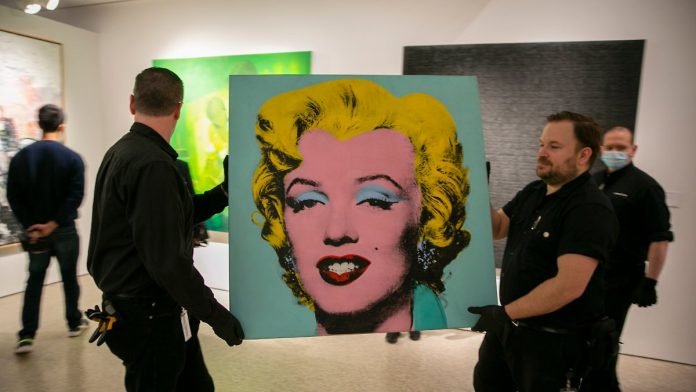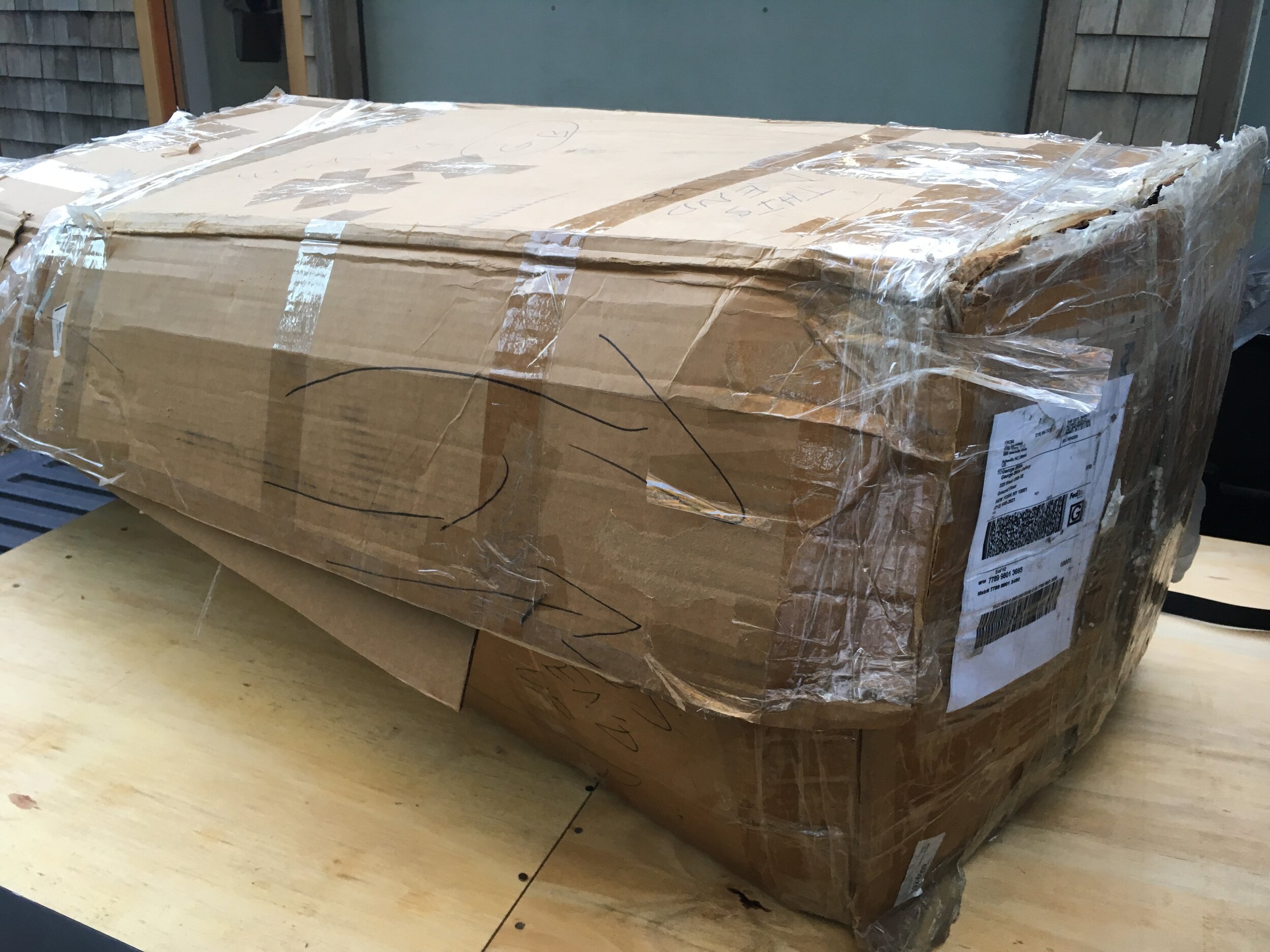In the late nineteenth century canaries were used as gas indicators in coal mines. Their rapid breathing and delicate nature served as an early warning of the buildup of toxic or explosive gases, giving miners warning and time to escape. Miners welcomed their chirping and treated the birds as pets.
While mechanical devices have since replaced canaries in mining the birds were used gas detectors in WWI and more recently in the Gulf War, where they were code-named ELVIS (Early Liquid Vapour Indicator System).
Artists perform a similar function, although it is not deadly gasses that they warn of but toxic economics. Art, serving no practical function, is the most useless of all products and accordingly is the very first business to feel the effects of economic disturbances. This makes art the Mother of all Canaries. At the first sniff of impending financial distress (an entirely imaginary condition for those of wealth) buyers flee the art market like miners fled coal mines when the canaries stopped singing.
WWI British soldier with canary
Like canaries, we are expendable. Artists are the foundation of a global $700 billion industry, but you would never know that from the way we are treated.
There are many galleries that prey on artists. Their scams range from opaque transactions with supposedly huge discounts to outright theft of artists’ works. Working artists* must endure all sorts of ill behavior and find it difficult if not impossible to defend themselves in a legal system that caters to the highest bidder.
Pay-to-play is the most ubiquitous scam. “Competitions” for exhibitions are hosted by galleries, but there is almost always an entry fee. On CaFÉ (callforentry.org), “no fee” opportunities to submit your work are free, but there is often a fee if you are accepted. Many of these “opportunities” are for digital exhibitions - posting your images online. Do the math: if a galleries receives 1,000 entries at $35, that’s $35,000. This is a harvesting scam that preys on those trying to promote their work, especially aspiring artists**.
A particularly egregious example of this is Artconnect.com, which is run by an artist. Artconnect is a ‘free’ listing of opportunities for artists, but it is limited to a free viewing 5 listings per month without a monthly subscription fee, which only becomes evident after you register. I’m betting that the “artist” running this scam derives more income from his so-called service - which is available for free on numerous other sites - than he does from sales of his art.
Peggy Guggenheim at the Venice Biennale, 1948
Itsliquid.com is arguably the most recognized of the pay-to-play scams, currently hosting five (5!) open calls. Their invitations to show at the Venice Biennale are spread far and wide - I get one every year. After some digging it turns out that they’re not showing IN the Venice Biennale, but in Venice at the same time. According to some artists, after you pay to ship your art to Italy, Itsliquid sends a bill for exhibition fees based on the size of the work. Others have had their work confiscated for not paying the exhibition fee, or simply not returned.
Social responsibility is not supposed to be an oxymoron. The great patrons of the arts - from the House of Medici to Peggy Guggenheim - are long gone. It is no longer the moral obligation of the wealthy to support the arts - or for that matter any social activity that does not reward them personally - now all they do is hondle for the largest possible discount, as if the can’t afford pay retail. According to NY Times, Agnes Gund is the last real patrons of the arts, cited in an aptly article titled Is Agnes Gund the Last Good Rich Person?
VOLATILE, Miles Jaffe
On the bright side, I live a modest and reasonably comfortable life. I eat well, sleep well, and work on the things I want to work on, when I want to. I know my place and I don’t aspire to more. The difficulty in art is not with making it - which highly challenging and immensely satisfying - it is with the business of art. All I can do is keep chirping.
* A “working artist” as someone who actually makes a living making art. This does not include trust fund artists or those with other means of income. This is not to belittle the works such people create, but rather to point out the difference between casually making art and navigating the art world out of necessity.
** Aspiring artists are those who create with a passion but maintain jobs of various sorts in order to survive and fund their art. Aspiring artists are desperate to get into a show - or better yet get gallery representation - and accordingly are easy prey. Playing lotto probably has better odds of success than paying galleries for the privilege of submitting your work for their review.






































![[The Economics of Art]](https://images.squarespace-cdn.com/content/v1/554781e3e4b08d5dd9374f66/1573940113734-S7CFI9BUXDSC8HWSR9GG/Economics+of+Art+-+Miles+Jaffe.jpg)
![[Artists’ Color Series paint tubes individually wrapped in preparation for shipping.]](https://images.squarespace-cdn.com/content/v1/554781e3e4b08d5dd9374f66/1572466645248-WB2U2PV8K9B6P5SMZG4O/IMG_5730.JPG)
![[A typical plywood-lined, solidly-packed box waiting for pickup at my studio.]](https://images.squarespace-cdn.com/content/v1/554781e3e4b08d5dd9374f66/1572465804266-VN7ON59Z3WNJVEMCO3WU/IMG_5968.JPG)
![[How I received the work back.]](https://images.squarespace-cdn.com/content/v1/554781e3e4b08d5dd9374f66/1572466937249-EXK5E7N4V4SRVQ00M6PI/IMG_7910.JPG)


![[Nice packing job.]](https://images.squarespace-cdn.com/content/v1/554781e3e4b08d5dd9374f66/1572466953982-EVT9CSEGRVQXSMAANEZF/IMG_7905.JPG)





